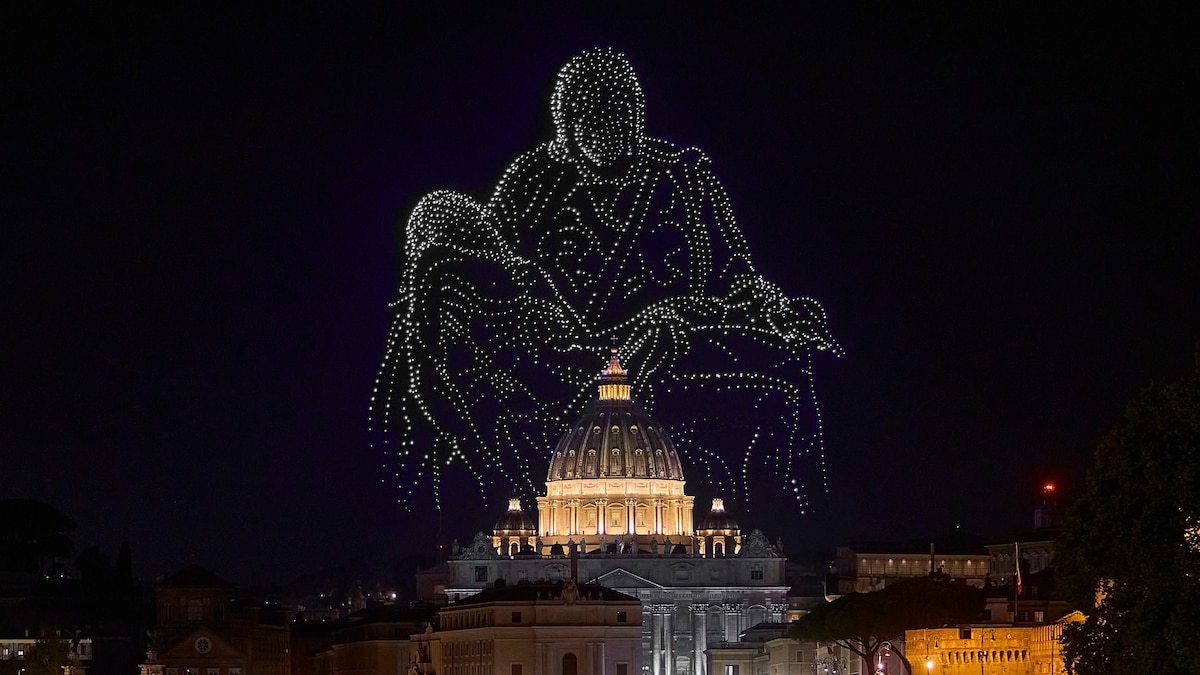Midway through, the group faced momentary uncertainty with the death of Pope Francis and the election of the first American pope, whom Kimbal Musk says wrote them a meaningful letter, essentially blessing the idea to carry the plans forward.
The technology to run the drones is unique to the Nova Sky Stories team in that they manufacture their own drones and keep all the development of software, hardware and firmware in house. That means any troubleshooting can be done on the spot. There’s no calling a helpline as the engineers and programmers involved are part of the core team, a group of around 60 people.
Crowds thronged St. Peter’s Square to take in the first-ever concert at the historic space and to marvel at Europe’s largest drone show.
Backstage at the train-track airfield, Jeremy Stein, Chief Executive Producer at Nova Sky Stories, held a drone like it was a toy, touching the propellers and turning it upside down before placing it back in its charging bay. What makes the company unique in the size and scale of shows they do all over the world, he said, is that their drones are specially built, rather than relying on refitted heavy drones originally designed for military or surveillance.
“Top to bottom is all in one ecosystem. Nothing gets farmed out,” Stein told National Geographic. “And that creates an accelerated curve of development that was a big part of our vision. Because when anything is new, like the Vatican show and its particular challenges, for example, we’re not calling a different company for guidance.”
The Nova drones can run a two-hour show on multiple radio and GPS frequencies, utilizing the best satellite signals available, including dedicated satellites none of the team is eager to discuss openly for security reasons. The group uses a technology called RTK or Real Time Kinetics, which enables the extraordinary resolution that looks like real images floating in the sky.

